Medusa pleco - Ancistrus ranunculus
Scientific name: Ancistrus ranunculus
Common name: Medusa pleco
Family: Loricariidae
Usual size in fish tanks: 11 - 14 cm (4.33 - 5.51 inch)
014
Recommended pH range: 6.5 - 7.5
Recommended water hardness: 7 - 22°N (125 - 392.86ppm)
0°C 32°F30°C 86°F
Recommended temperature range: 24 - 28 °C (75.2 - 82.4°F)
The way how these fish reproduce: Spawning
Where the species comes from: South America
Temperament to its own species: peaceful
Temperament toward other fish species: peaceful
Usual place in the tank: Bottom levels
Origin
The Medusa Pleco (Ancistrus ranunculus) originates from the fast-flowing waters of South America, specifically in the Rio Xingu and Tocantins rivers. These habitats are characterized by strong currents, rocky substrates, and well-oxygenated water. In the wild, they inhabit the bottom levels, often hiding among rocks and submerged wood, which provides them with shelter and food. Replicating this natural environment in the aquarium is key to their well-being.
Lifespan
With proper care, Ancistrus ranunculus can live between 5 and 8 years in captivity. Regular maintenance, stable water conditions, and a balanced diet contribute to their longevity.
Short Description
Medusa Plecos are peaceful bottom dwellers, known for their unique appearance with prominent head bristles, especially in males. While generally peaceful, they can display territorial behavior towards other bottom-dwelling species, so it’s important to provide ample space and hiding spots in the tank. They require well-oxygenated water with a strong current, which can be achieved by directing filter outlets or using small powerheads. These plecos are also known to gnaw on bogwood, which aids in their digestion and provides essential fiber.
To create an ideal environment, include rocks, bogwood, and other structures to offer plenty of hiding places. Floating plants can help subdue the lighting, which mimics their natural habitat and makes them feel more comfortable.
Food and Feeding
Unlike many other Ancistrus species, the Medusa Pleco has a higher preference for meaty foods. While they will accept algae wafers and plant-based foods, their diet should include more protein-rich items. Quality sinking pellets or flakes can be used as the staple diet, with treats like bloodworms and brine shrimp offered twice a week. Always ensure a balanced diet to maintain their health and vibrant coloration.
Sexing
Sexing Medusa Plecos can be done by observing the head bristles. While both males and females will have these bristles, the male's are much more pronounced and extend further from the head.
Breeding
Breeding Ancistrus ranunculus has become more common in recent years. To encourage spawning, use slightly acidic water in the breeding tank and keep lighting dim, which can be enhanced by adding floating plants. Provide narrow PVC pipes or similar hiding places that are just slightly larger than the fish. The male will guard the entrance, and the female will lay her eggs inside. Once fertilized, the male takes full responsibility for the eggs, fanning them and ensuring their safety. The eggs typically hatch in about 5 days, but the fry will remain in the pipe until they are ready to emerge. At this stage, they can be fed newly hatched brine shrimp or finely crushed flakes.
Tank Setup
To successfully keep Medusa Plecos, it’s essential to replicate their natural environment. A tank of at least 100 liters (26 gallons) is recommended, with a focus on horizontal swimming space and hiding areas created by rocks and bogwood. The water should be well-oxygenated and maintain a temperature of 24-28°C (75.2-82.4°F). The pH range should be between 6.5-7.5, and the water hardness between 7-22°N (125-392.86 ppm). A gentle water flow is preferred, mimicking the rivers where they originate. Regular water changes and a high-quality filtration system are essential to keep their tank clean and oxygenated.
Tankmates
Medusa Plecos are peaceful fish that can be housed with other non-aggressive species. They should not be kept with overly territorial or aggressive bottom dwellers to avoid conflicts. Ideal tankmates include peaceful South American species like tetras or dwarf cichlids. Ensure that all species have their own territories and plenty of hiding places to prevent stress and aggression.
Pictures
Bought by aqua-fish.net from jjphoto.dk.
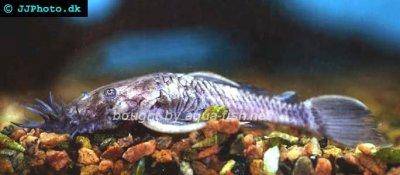



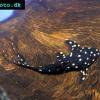 Adonis
Adonis  Lyre
Lyre 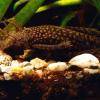 Bristlenose
Bristlenose  Gold
Gold  Bushymouth
Bushymouth  Spotted
Spotted 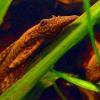 Bristlenose
Bristlenose 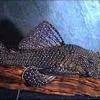 Starlight
Starlight  Spotted
Spotted  Catfish
Catfish  Bushynose
Bushynose 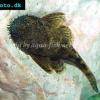 Bristlenose
Bristlenose  Green
Green 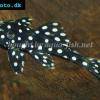 LDA-33
LDA-33 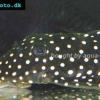 Snowflake
Snowflake 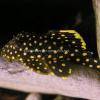 Gold
Gold 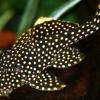 Gold
Gold  Bulldog
Bulldog  Dasyloricaria
Dasyloricaria 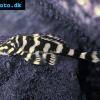 Butterfly
Butterfly 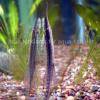 Whiptail
Whiptail 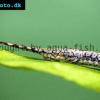 Amazon
Amazon  Twig
Twig 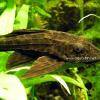 Spotted
Spotted 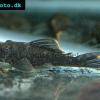 Spotted
Spotted 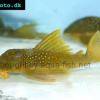 Lemon
Lemon 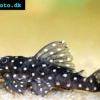 Pleco
Pleco  Peruvian
Peruvian 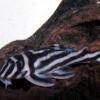 Zebra
Zebra  Pleco
Pleco  Hypostomus
Hypostomus 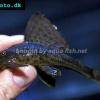 Pleco
Pleco  Suckermouth
Suckermouth  Spotted
Spotted  Woodeating
Woodeating  Golden
Golden  Sultan
Sultan  Multiradiatus
Multiradiatus 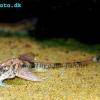 Marbled
Marbled 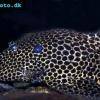 Pleco
Pleco 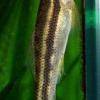 Dwarf
Dwarf  Dwarf
Dwarf  Dwarf
Dwarf  Oxyropsis
Oxyropsis 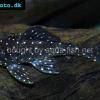 Orange
Orange  Blue
Blue 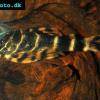 Clown
Clown 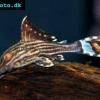 Royal
Royal  Blue
Blue 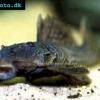 Rubber
Rubber  Goby
Goby 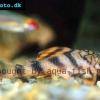 Wormline
Wormline  Para
Para  Tiger
Tiger 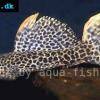 Leopard
Leopard 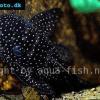 Spiny
Spiny  Marbled
Marbled 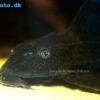 Amazon
Amazon  Common
Common  Sunshine
Sunshine 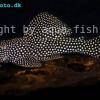 Golden
Golden